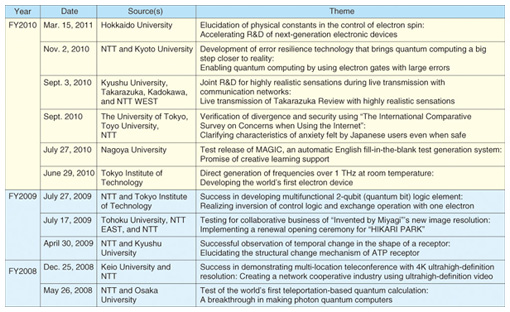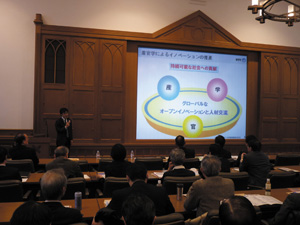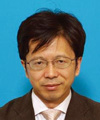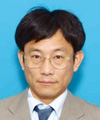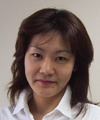 |
|||||||||||||||||||||
|
|
|||||||||||||||||||||
|
Feature Articles: Collaborations with Universities Leading to Open Innovation in NTT's R&D Vol. 9, No. 10, pp. 11–16, Oct. 2011. https://doi.org/10.53829/ntr201110fa1 Efforts Toward Organizational University CollaborationsAbstractNTT Service Integration Laboratories is striving to create organizational collaborations with universities across a wide range of academic disciplines in order to carry out joint research projects and human resources exchanges more efficiently and effectively. In this article, we introduce the framework for university collaboration and the content of activities. We also introduce specific examples of such collaborations.
1. IntroductionSocieties today cannot help but be drawn into a maelstrom of rapid globalization, drastic changes in the business landscape, and fierce competition on a global scale. To respond to the rapid changes in social needs and diversification, it is necessary to partner organizations capable of thinking in different ways and perform research and development (R&D) that incorporates such thinking. In Japan, academic-industrial collaboration—linking companies and universities—in R&D and exchanges of human resources took a great leap forward as a result of the establishment of national university corporations in 2004, which drew the government’s attention [1]. NTT is also working to create organizational R&D collaborations with universities [2]. To research and develop basic technologies in order to create new forms of communication and their supporting networks and to actively engage in advanced basic research with a ten-year outlook, NTT is engaged in R&D collaborations with universities across a wide range of disciplines. We have great expectations for diverse results by achieving open innovations. The fruits of these innovations will be profitable not only from a technological standpoint but also from a social standpoint and will make possible R&D that integrates disparate fields. For universities, such collaborations present a win-win situation for improving research and educational activities. In this article, we introduce our framework for university collaboration and the content of our activities. We also introduce specific examples of such collaborations. 2. Levels of collaborationNTT has a long history of collaborating closely with universities to conduct joint research. However, such collaborations have been based on individual-to-individual relationships among fellow researchers. Thus, it has been hard to grasp the overall state of organization-to-organization activities. Moreover, because the points of contact were unclear, problems emerged, including a lack of continuity in the collaborations, difficulties with collaborations across multiple fields, and researchers having to shoulder the burden of contract negotiations related to joint research. To solve such problems, we began efforts toward collaborations with universities on the organizational level, and these have resulted in various joint research projects and human resources exchange. Our efforts center on signing comprehensive organization-to-organization contracts and creating collaboration committees consisting of executives from both NTT and universities to serve as the core of the collaborations. In July 2004, we signed the first organizational collaboration with Kyushu University. Since then, NTT has signed agreements with ten universities and one research institute, as shown in Fig. 1. Moreover, NTT EAST and NTT WEST, which are intimately connected with regions outside Tokyo, have forged close relationships with three institutions.
The planning and operation of an organizational collaboration is the responsibility of the collaboration committee, which is composed of collaboration managers and research representatives from both parties. The committee has a shared awareness of the R&D being tackled and the human resources available for exchange and creates collaborative relationships that span a wide range of disciplines. To strengthen and further expand joint research projects that have past connections, we are working on creating new collaborations between departments that have not collaborated before; we are also creating integrative collaborations that span multiple laboratories. We are doing this through matching conducted from a wide perspective on the basis of the needs and seeds of each party. In the area of human resources exchange, we are working on accepting student interns and establishing new occasions for technological exchanges through the participation of a wide range of departments, while being aware of sustained development. The issues associated with conventional collaborations, their drawbacks, and the goals and methods of organizational collaborations are shown in Fig. 2. The forms of collaboration and the contact department on the university side may differ depending on the university. However, for NTT R&D, the unified point of contact for all organizational collaborations is NTT Service Integration Laboratories.
3. AchievementsBy utilizing the special features of each university and complementing each other’s strengths, we have conducted joint research and human resources exchanges in various areas centered on the field of communications, including physical properties and materials science, leading-edge devices, IP (Internet protocol) networks and ubiquitousness, information and communications technology (ICT) (including information security), as well as higher-level themes such as audio/video and communications. We are also working on social concerns, including energy and the environment, disaster prevention, medical science, and agricultural science. In FY 2010, more than 150 joint research projects were carried out through organizational university collaborations, resulting in more than 100 patent applications being filed and more than 200 papers being submitted to academic journals and presented at international conferences [3]. We are also committing ourselves to transmitting the achievements of our joint research projects to the public through press releases from NTT and our university partners (see Table 1) and by publishing books. As an example of the latter, we published the results [4], [5] of our research collaboration with Kyoto University’s Disaster Prevention Research Institute in a book aimed at the general public [6]. Studies in disaster prevention have until now focused on protecting society against natural disasters, for example through anti-disaster technologies such as construction methods to improve the ability to resist disasters. However, this book is premised upon the occurrence of disasters and focuses on effective implementation of relief and recovery and on technologies for minimizing the harmful effects of natural disasters. It calls for the creation of a resilient society by exploiting ICT. Such a society would have resistance to natural disasters and greater recovery strength. Next, we introduce two examples of human resources exchanges.
3.1 Kyushu University COE ProgramFirst, we were involved in two programs: (1) MEXT’s 21st Century COE Program “Development of Dynamic Mathematics with High Functionality” (MEXT: Ministry of Education, Culture, Sports, Science and Technology in Japan; COE: Center of Excellence) conducted by Kyushu University’s Faculty of Mathematics (2003–2007) and the graduate school reform support program “Training Program for Ph.D. and New Master’s in Mathematics for Industry” (2007–2009) and (2) the Global COE Program “Education-and-Research Hub for Mathematics-for-Industry” (2009–2013) [7]. The curricula of these programs require an internship of three or more months by doctoral students. Since 2006, NTT has been accepting students every year as interns for such programs. We have also been continuing to accept summer interns for the new master student development program and dispatching lecturers. Through its COE program activities, Kyushu University has established an internationally unprecedented Institute of Mathematics for Industry. This laboratory is Japan’s third mathematics research institute, following the Research Institute for Mathematical Sciences (Kyoto University) and the Institute of Statistical Mathematics [8]. 3.2 Keio University SymposiumIn February 2011, the collaboration committee of Keio University and NTT held the symposium “Seeking to Realize Ubiquitous Innovations through ICT: From Creating Leading-edge Basic Technologies to Application” at Keio University’s Mita campus [9]. Atsuhiro Goto, the director of NTT Cyber Communications Laboratory Group (now at Institute of Information Security) gave the keynote address entitled “The Promise of Academic-Industrial Collaborations: Creating New Services for the Optical Era” (see Photo 1). Next, researchers from Keio University and NTT gave six presentations in three areas––electronics and physical properties/materials science, networking, and human communication technologies, announcing the results of their cutting-edge research. There were over 170 participants from companies, research institutes, and government agencies as well as universities. A rich variety of presentations on a wide range of topics was given, from basic research to applications in the field of ICT, making the symposium an overwhelming success.
4. Collaborations with overseas universitiesNTT is also exploring organizational collaborations with overseas universities. Recognizing that collaborations in Asia are growing in strength, we are proceeding with collaborations with universities in China, Vietnam, and India. Because there are issues such as differences in customs and laws, we are still at the stage of carrying out trials of offshore software development related to research rather than conducting R&D collaborations like those with domestic universities. The universities have favorably evaluated the acquisition of new research themes and the training of students. For NTT, the advantages are promoting exchanges of human resources and reducing costs. 5. ConclusionFor efforts toward organizational university collaborations, it is critical to regularly commit energy to the creation of new research themes as part of the metabolism of an organization and to develop strong research themes that take account of business and social developments. It is also essential to widely and continually foster mutual understanding through exchanges of human resources. With NTT’s organizational university collaborations, we are not only creating win-win relationships with universities, but also working to improve Japan’s growth strategy and increase its international competitiveness and contribute to solutions to society’s problems. References
|
|||||||||||||||||||||










